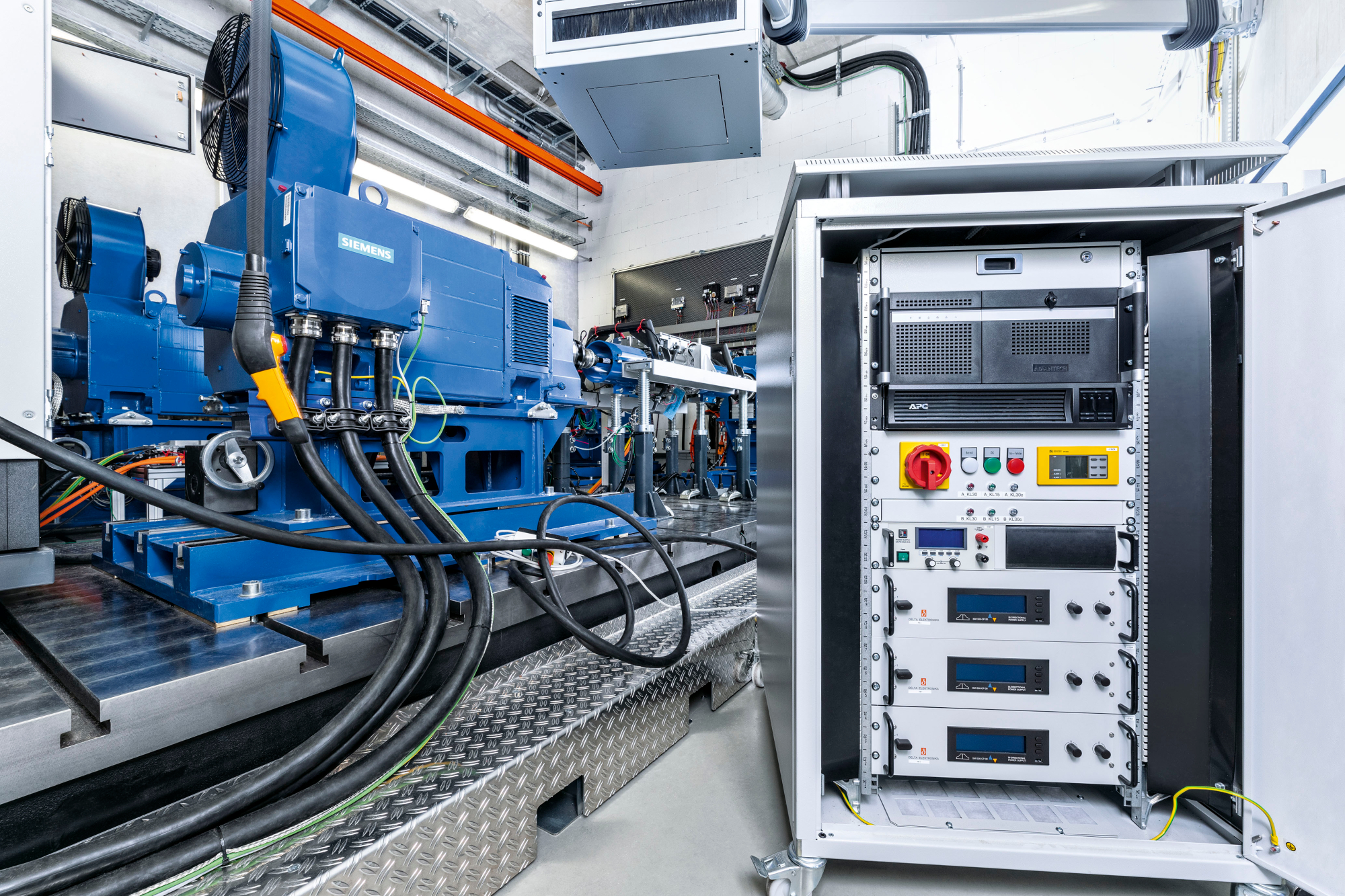
Composite test bench reduces costs
The development time and associated costs can be significantly reduced if relevant e-mobility components are tested on a composite test bench. Validations and functional approvals are possible long before vehicle integration has taken place and the overall vehicle system is available.
Highly efficient test for e-machines
The test bench is based on four powerful electric motors, each with a continuous braking power of 280 kW, a variable vehicle energy system with a total output of 1,000 kW and a battery climate container that enables the vehicle battery to be operated in air-conditioned mode in cold and warm ambient temperatures.
Charging infrastructure & charging systems
The integrated charging infrastructure enables the battery to be charged with both AC and DC voltage with up to 500 kW charging power. All common charging systems and charging standards, such as CHAdeMO, CHAdeMO 2.0, China GB/T, CCS1 and CCS2, can be integrated into the network test.
Inclusion of all units
Electrified auxiliary units, such as electric heaters or refrigerant compressors, can be integrated into the high-voltage system on the test bench. The specially developed climate load unit then maps the thermal load on the compressors.
Integration of components via simulation
If individual vehicle components are not yet sufficiently mature, they can be partially or fully simulated. This applies both to components at the control unit level and at the power level.
All system function tests through to functional safety can be tested in the entire high-voltage system in accordance with the ISO 26262 standard.
Technical data
"We are setting new standards for the development of heavy commercial vehicles!"
Peter Bahr
